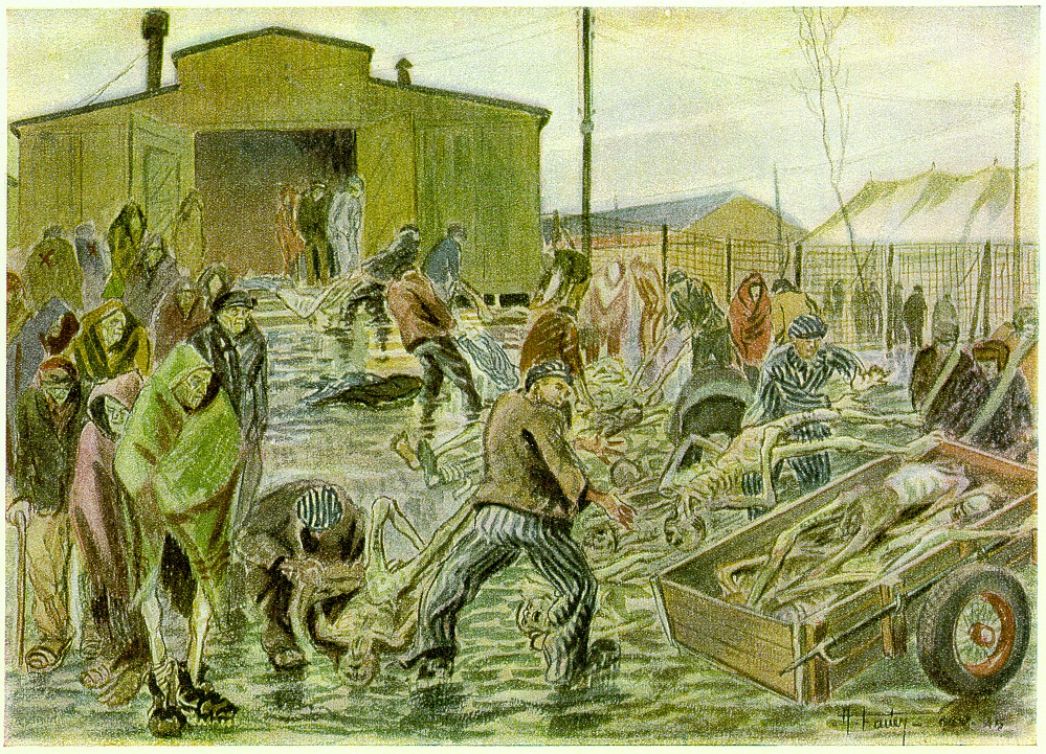
©Buchenwald Memorial
In early 1945, they moreover drove thousands of men and boys—primarily Jews, many of them more dead than alive—from the dissolved Auschwitz and Gross-Rosen camps into the hopelessly overcrowded special zone. Paul Steinberg arrived in Buchenwald on 26 January 1945. He was eighteen years old at the time.
Decades later, he remembered:
“The Little Camp was a world of its own, and carefully isolated: there you ate less, died more, and were Jewish. In return, you didn’t work. The detachments that marched out of the big camp every day to … slave away in the weapons factories consisted of more or less presentable inmates, not the human waste gradually dying off and piling up in the Little Camp. In the morning, even before the bread was distributed, we had to lay the victims of the previous night onto a mobile platform designated for that purpose. The pallid complexions of the dead, their death grins, their inextricably intertwined, disembodied limbs … .
What is unbearable to me now is the thought that it all seemed so banal to us, a routine. We load the bodies on, fleetingly recognize many a neighbour from the boxcar, many a companion from the labour detachment, known the day before, sent off the next, without batting an eyelash."[1]
Some 6,000 inmates died in the Buchenwald Little Camp in the first hundred days of 1945 alone. Yet this place of horror was also the scene of a rescue operation. Hundreds of children and adolescents were saved by the efforts of political and Jewish inmates. On 11 April 1945, they were liberated in the Little Camp children’s block 66.
[1]Paul Steinberg, Chronik aus einer dunklen Welt, München 1998 [Paris 1996], S.151f.

